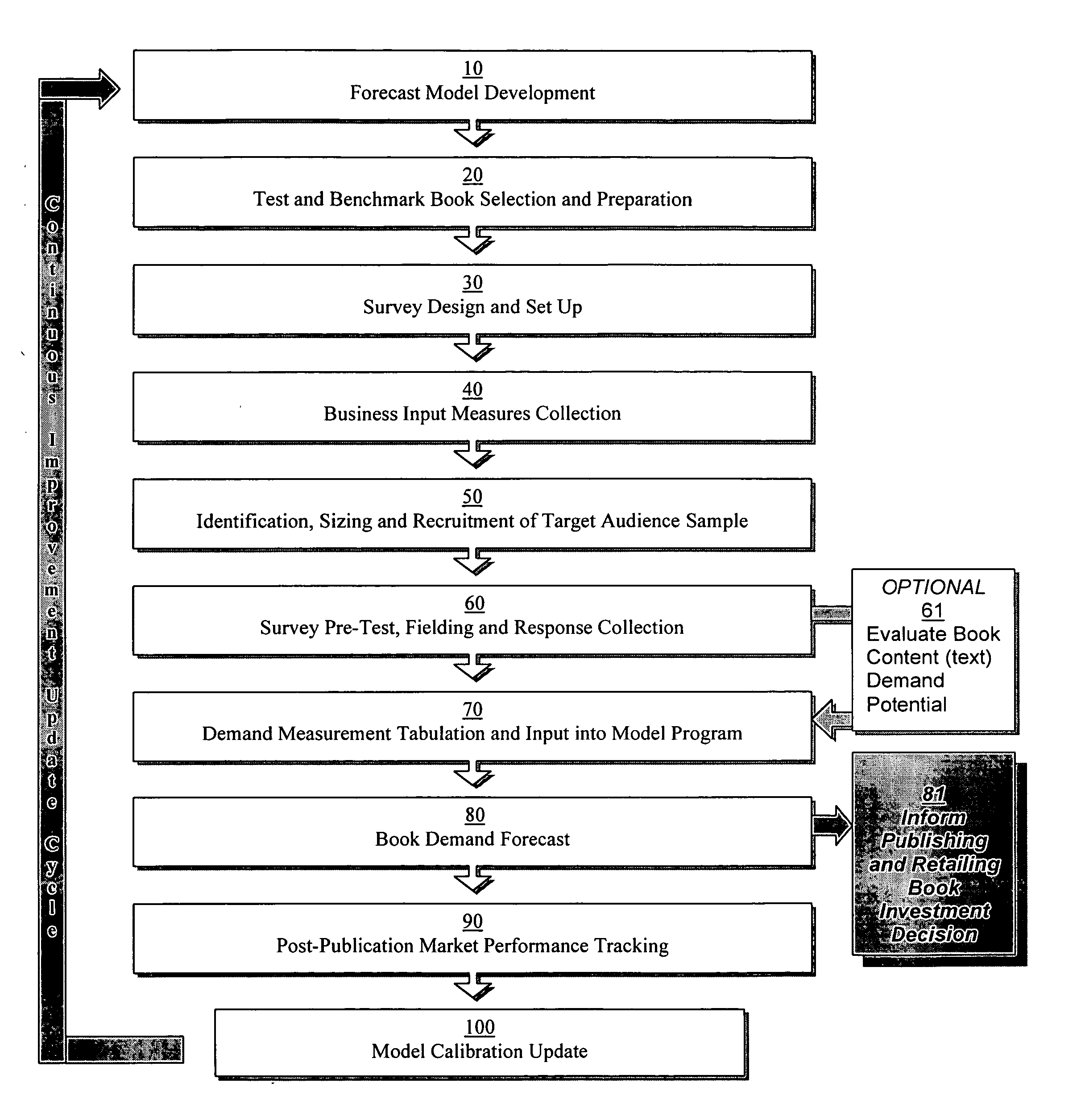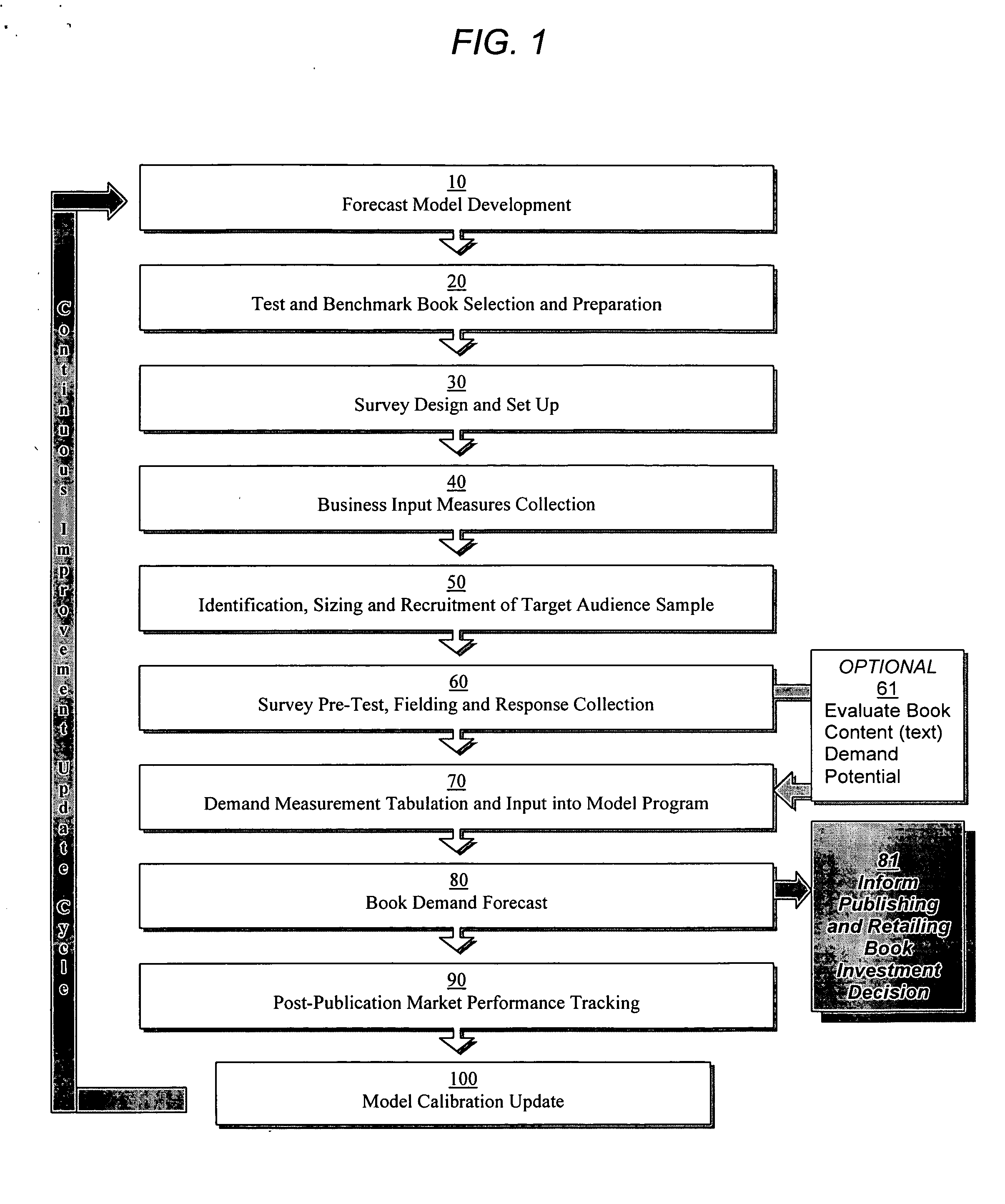Systems and methods for forecasting book demand
a system and book demand technology, applied in the field of systems and methods for forecasting book demand, can solve the problems of declining audience base, flat to declining overall sales of consumers' books, and newly published books failing to meet p&l goals,
- Summary
- Abstract
- Description
- Claims
- Application Information
AI Technical Summary
Benefits of technology
Problems solved by technology
Method used
Image
Examples
Embodiment Construction
[0018] Systems and methods according to the invention provide not only book-specific demand measurement on a pre-publication basis, but can do so quickly, efficiently, inexpensively, and in sufficient volume to be economically highly advantageous to book publishers and retailers. Such systems and methods consolidate all major demand-impact components of a book, anywhere from the initial idea to the finished book stage, into a single-page “concept”. This concept is quantitatively evaluated, typically within a range of other new-book concepts, through a survey process that measures prospective-buyer purchase intent and other key demand influencers. This information is then combined with other critical distribution, marketing, publicity, and retail merchandising plan data into book-category-specific forecasting models. These statistical models determine either demand relative to other books in the category, or absolute demand in the form of volumetric forecasts. The findings can be use...
PUM
 Login to View More
Login to View More Abstract
Description
Claims
Application Information
 Login to View More
Login to View More - R&D
- Intellectual Property
- Life Sciences
- Materials
- Tech Scout
- Unparalleled Data Quality
- Higher Quality Content
- 60% Fewer Hallucinations
Browse by: Latest US Patents, China's latest patents, Technical Efficacy Thesaurus, Application Domain, Technology Topic, Popular Technical Reports.
© 2025 PatSnap. All rights reserved.Legal|Privacy policy|Modern Slavery Act Transparency Statement|Sitemap|About US| Contact US: help@patsnap.com


